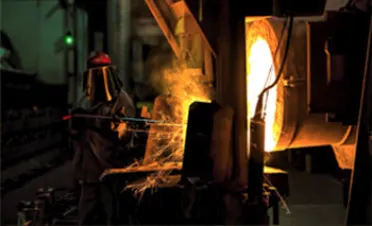precision sand casting
Precision Sand Casting An Overview
Precision sand casting is one of the most widely used manufacturing processes in the industry, providing the ability to produce complex parts with high dimensional accuracy. This method utilizes sand as the primary molding material, enabling manufacturers to create intricate shapes and designs that meet the stringent tolerances required in modern engineering applications.
The Sand Casting Process
The precision sand casting process begins with creating a pattern, usually made of metal, plastic, or other materials. This pattern is a replica of the final part and is used to form the mold. Once the pattern is constructed, it is placed in a sandbox, which is filled with a mixture of fine sand and a binding agent. The sand is compacted around the pattern to create a mold cavity.
After the mold is created, it is opened, and the pattern is removed, leaving a precise cavity that reflects the desired part's geometry. The next step involves pouring molten metal into the mold. The type of metal used can vary based on application requirements, including aluminum, iron, or bronze. Once the molten metal cools and solidifies, the mold is broken away to reveal the cast part.
Advantages of Precision Sand Casting
One of the key advantages of precision sand casting is its versatility. The process allows for the production of a wide range of shapes and sizes, from small components to large industrial parts. This flexibility makes it suitable for various industries, including automotive, aerospace, and construction.
Another significant benefit is the high dimensional accuracy it offers. Sand casting can achieve tolerances of ±0.5% to ±2.0%, depending on the part's size and complexity. This level of precision ensures that parts fit together accurately, reducing the need for extensive machining after casting—a crucial factor in reducing production costs.
Moreover, the use of sand as a mold material is cost-effective. Sand is abundantly available and can be reused in multiple casting cycles after proper treatment. This contributes to lower material costs and minimizes waste, aligning with contemporary sustainability goals in manufacturing.
precision sand casting

Challenges in Precision Sand Casting
Despite its advantages, precision sand casting does come with challenges. The quality of the final cast part can be affected by factors such as sand quality, the type of binder used, and the mold preparation process. Variability in these factors can lead to defects like sand inclusions, porosity, and dimensional inaccuracies.
To mitigate these issues, continuous advancements in technology and processes are being made. Modern techniques such as computer-aided design (CAD) and computer numerical control (CNC) machining help enhance design accuracy and allow for better quality control throughout the casting process. Additionally, advanced testing methods, like X-ray inspection and ultrasonic testing, can identify defects early in the production cycle.
Applications of Precision Sand Casting
Precision sand casting is utilized across a variety of sectors due to its adaptability and precision. In the automotive industry, it is used to manufacture engine blocks, transmission housings, and other critical components. In aerospace, components such as turbine blades and structural parts benefit from the cast's lightweight and robust qualities.
The construction industry also relies on precision sand casting for producing architectural elements and structural components that require intricate designs. Furthermore, the process has found applications in creating custom art pieces and sculptures, showcasing the versatility and creative potentials of sand casting.
Conclusion
In conclusion, precision sand casting is a pivotal manufacturing process that combines versatility, cost-effectiveness, and high dimensional accuracy. While challenges exist, ongoing technological advancements are pushing the boundaries of what precision sand casting can achieve. As industries continue to evolve, the demand for high-quality, precision-engineered parts will ensure that sand casting remains a relevant and vital production method in the future. By embracing innovation and adhering to best practices, manufacturers can harness the full potential of precision sand casting to meet the ever-increasing demands of modern engineering.
-
Top Extras Casting Solutions Die Casting and Sand Casting Experts High-Quality Casting and Die Casting ServicesNewsJun.10,2025
-
Top SS Casting Manufacturer Aluminum Die Casting Manufacturer China Precision Die Casting Company SupplierNewsJun.10,2025
-
High-Quality Brass Casting Sand for Precision Sand Casting Brass at HomeNewsJun.10,2025
-
Affordable Aluminum Sand Casting Solutions Custom PartsNewsJun.09,2025
-
High-Quality China Sand Casting Services Cost-Effective & ReliableNewsJun.09,2025
-
Premium Hot Stamping Parts Durable Plastic Decor SolutionsNewsJun.09,2025















